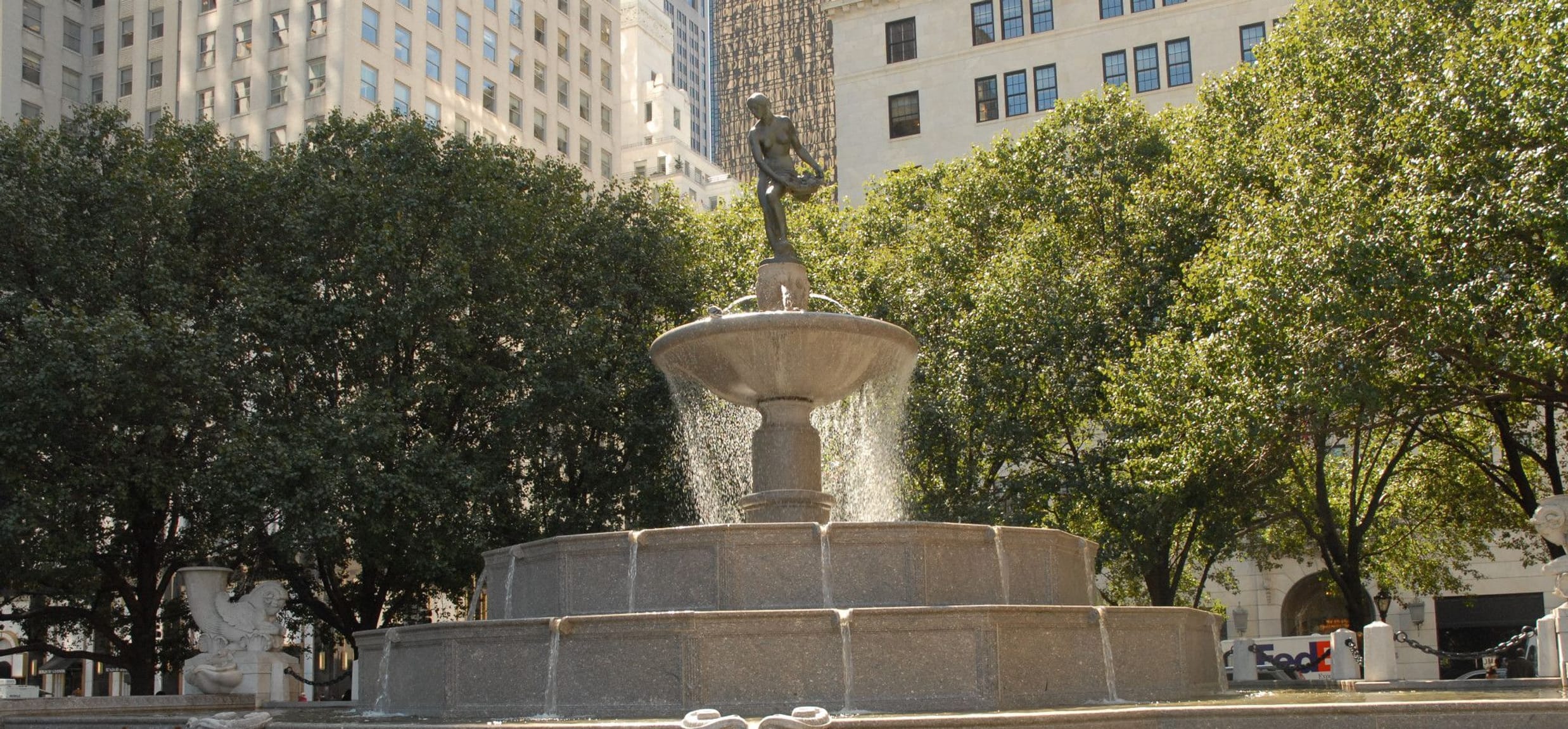Restoration
Grand Army Plaza South Restoration

After reconstructing Grand Army Plaza North in 2015, the Conservancy is now comprehensively restoring the south side. The project will include utility and infrastructure improvements; pavement repair; new plantings; upgraded site furnishings, including the historic benches; and conservation of Pulitzer Fountain.
Frederick Law Olmsted and Calvert Vaux recognized the significance of the southeast corner of Central Park as its principal entrance. Completed by 1860, it included a circular traffic island ringed with elm trees between 59th and 60th Streets. In front of the Vanderbilt Mansion between 58th and 59th Street was another small semicircular green space with pathways, grass, and a double row of trees. By the turn of the 20th century, sculptor Karl Bitter started advocating for a formal treatment of the site, evoking the Place de la Concorde in Paris as inspiration. In 1911, newspaper publisher Joseph Pulitzer died and bequeathed $50,000 to build a fountain at the southeast corner of Central Park. The design competition that followed was not only for a fountain, but for a broader vision of the plaza as a grand entrance to the Park, as Karl Bitters suggested.
The architectural firm of Carrère and Hastings won the plaza design competition by unanimous vote in 1912. Their concept called for two symmetrically designed islands: Grand Army Plaza North with the William Tecumseh Sherman monument and the facing island featuring the fountain, separated by 59th Street. The sculptor Bitter was selected to craft a female figure for what later became known as the Pulitzer Fountain.
The south side of the plaza was completed in 1916. The north side, delayed by construction of the subway below, was not completed until 1921. Throughout its history, the plaza and Pulitzer Fountain underwent many repairs, the last restoration completed in 1990.
After the successful restoration of the north side of Grand Army Plaza in 2015, this next phase of the project will complete the comprehensive restoration of the south side. It will include replacing the single row of Callery pear trees with a double row of the historically appropriate London plane trees, thus increasing the tree canopy and matching the trees at Grand Army Plaza North. This phase of the project will also focus on repairing and replacing deteriorating pavements consistent with the original plaza design and conserving Pulitzer Fountain to ensure the long-term stewardship of this landmark feature.
Scope of Work
Utility and Infrastructure Improvements
- Replace pedestrian lighting in-kind
- Install new drainage infrastructure
- Upgrade water supply for irrigation and fountain
Pavements
- Return to historic paving materials; return bluestone to historic dimensions and patterns
- Remove interior curbs and regrade paving for universal accessibility
- Replace or reset granite street curbs, as needed
Site Furnishings
- Recreate historic benches in granite
- Provide post-and-chain fencing at planting parterres
Planting
- Align the trees to the configuration and species of the historic design, matching the plantings in Grand Army Plaza North
- Provide structural soil to optimize tree growth
- Restore evergreen hedges, lawn, and boxed topiary at parterres to match Grand Army Plaza North
Fountain
- Update fountain mechanical systems
- Reset, repoint, and clean granite elements, as required
- Construct a larger vault underneath Pulitzer Fountain to allow for increased maintenance access for Operations staff
- Conserve Pomona statue